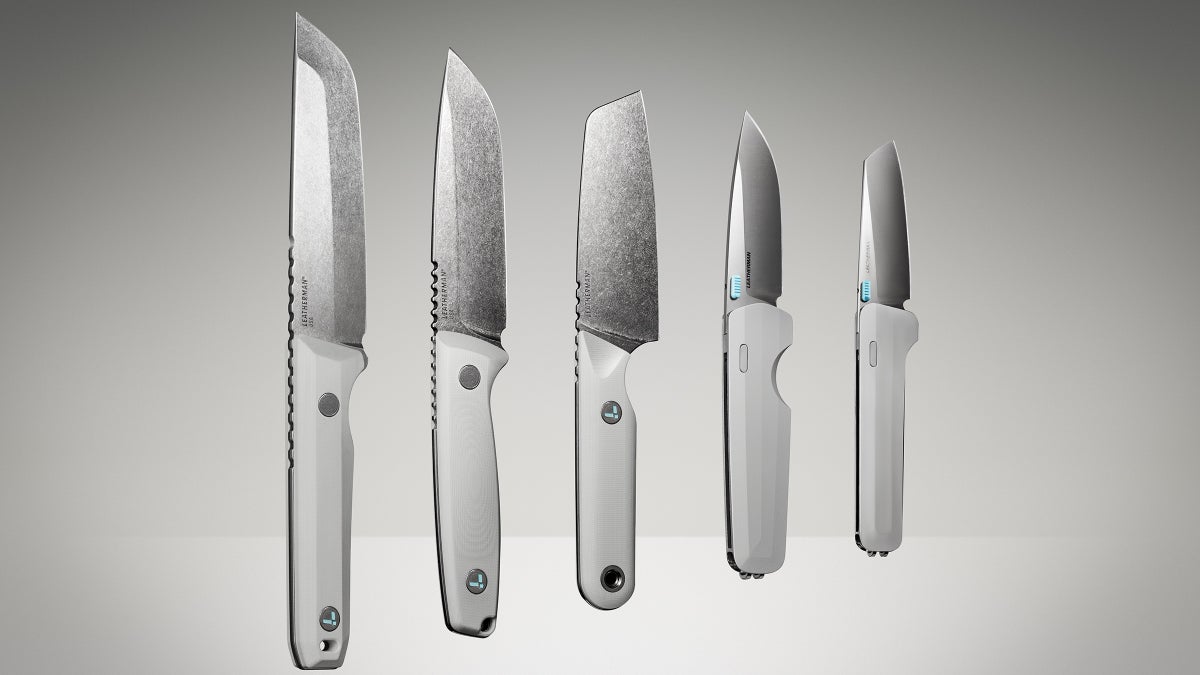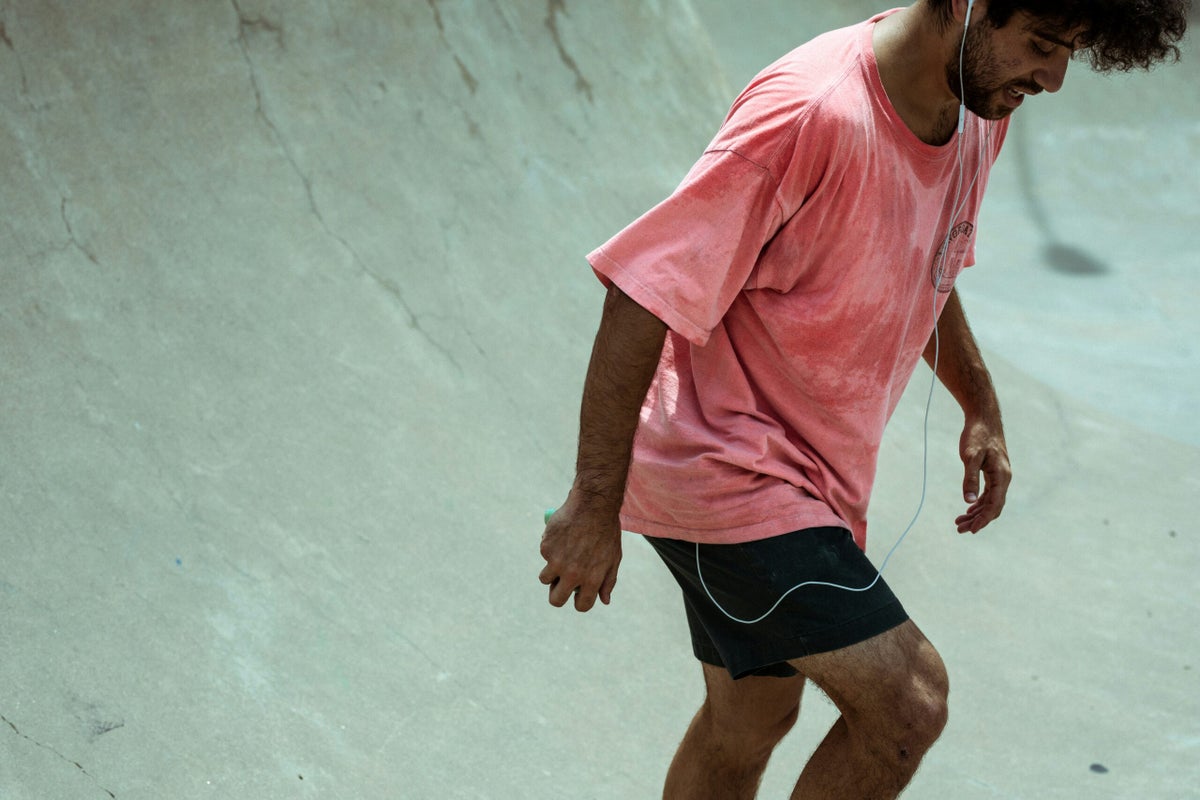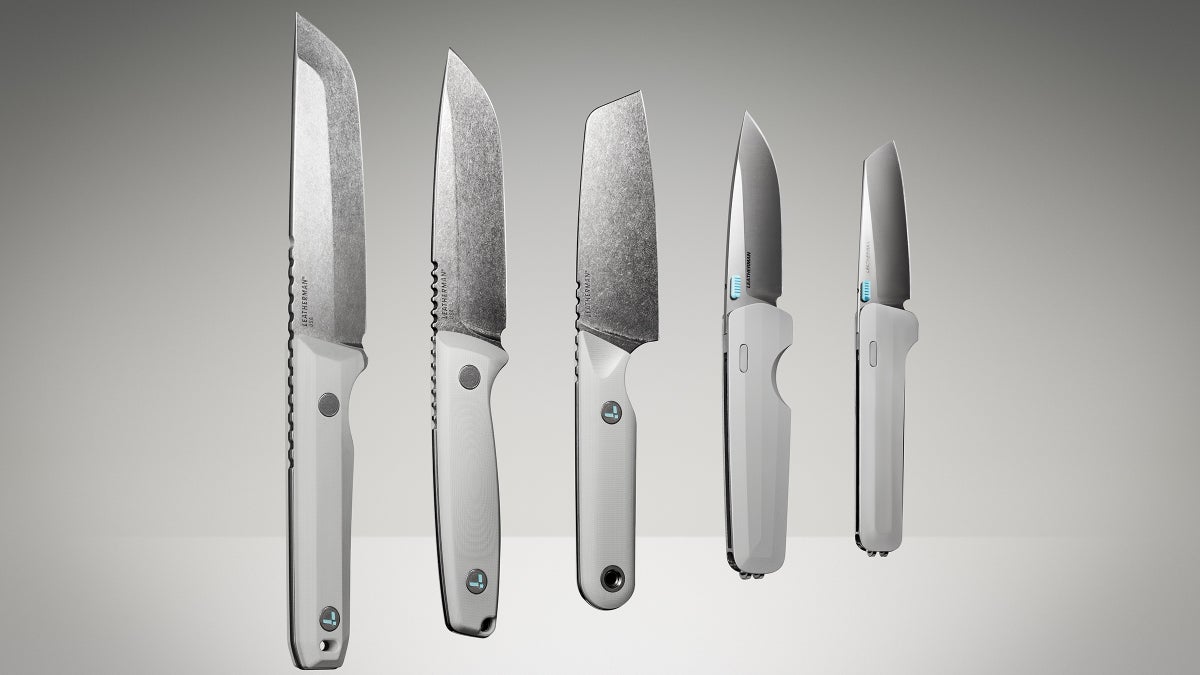
Ask me which brand of multitool you should buy, and there’s only one answer I’m going to give you: Leatherman. Not only did the Portland, Oregon-based manufacturer invent the segment in 1975, but it continues to make the highest quality, most innovative tools out there. Now, with its first range of quality blade-only knives, Leatherman hopes to put something simpler in your pocket.
Why carry a knife instead of a multitool? After all, most Leathermans already include a blade, amongst all their other tools. That’s a question the company aimed to find a different answer to with the Arc, a flagship multitool that I reviewed in 2023. What that product got right was the use of the most well-rounded premium blade steel ever—MagnaCut. But no matter how sleek, a multitool will never be as comfortable to hold as the handle on a dedicated knife, as easy to carry as a blade-only tool, nor as robust as a fixed-blade knife.
This creates an interesting conundrum for handy folks like you and me: Which should you carry? With this new range of knives, Leatherman invested in a new manufacturing facility (also in Portland) to make that answer, “a Leatherman,” no matter what tasks you expect to tackle.
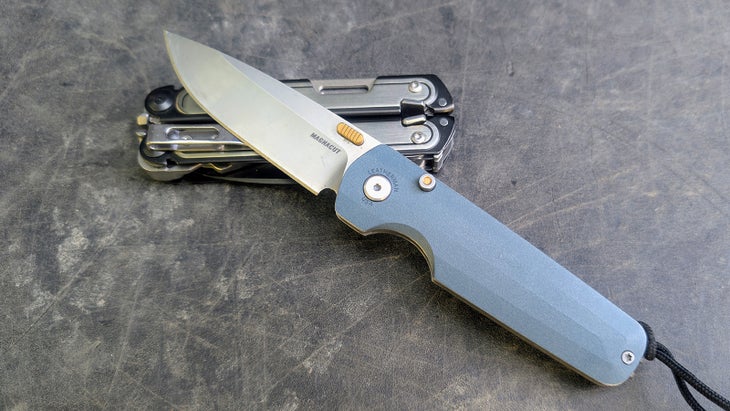
Folding Leathermans
Let’s talk about the folding knives (both $300) first.
The blade steel is again MagnaCut, which is being widely adopted across the premium knife space thanks to its combination of traditionally incompatible performance metrics: toughness, edge retention, and corrosion resistance. And also because it has a cool name. There are two styles of blade on offer. The Blazer features a 3.15-inch hollow-ground drop point blade; the Glider a hollow 3.0-inch sheepsfoot. Choose the Blazer for all-round use, and pick the Glider if you’re planning on slicing stuff up near puncture-prone materials like human skin.
Both feature innovative handles that are milled from a block of billet stainless steel in two halves. This approach sets the knives apart from others in the premium space and delivers to the knives a unique feel. Inside each half, you’ll spot skeletonization that saves weight, and allows internal components like the lock, spring, and bushings to be recessed into the handle. This facilitates a slim overall package, but the thing you’ll really notice is that there’s no space between the blade and either side of the handle. Combined with the chunky steel, you’ll notice a solid-feeling folding knife.
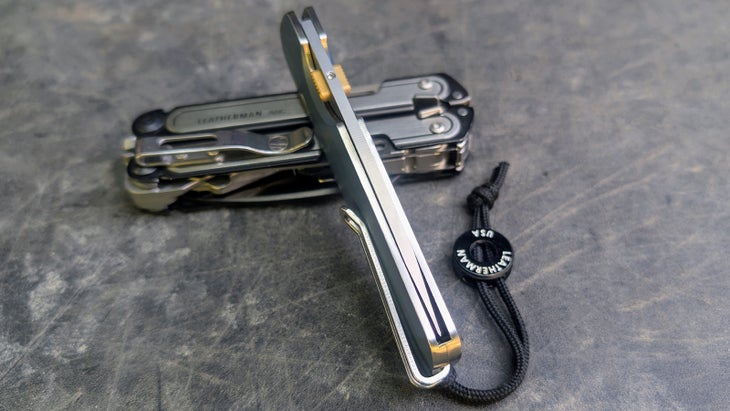
A lack of any additional handle scale material adds to the knive’s sense of solidity. Rather than bolt a piece of micarta or G10 to the stainless handles, Leatherman instead applies Cerakote, a ceramic coating that’s virtually impervious to damage.
In contrast to most other folding knives, which have coalesced around one of three locking mechanisms—frame, Benchmade (which aged out of patent protection recently, leading to widespread adoption), and liner—Leatherman instead opted for a unique “compression wedge” mechanism of its own design. Flick the blade open, and a button on one side of the knife that nominally sits flush with handle slides inwards, blocking the blade from folding closed and causing its opposite side to protrude from the handle. Push that now-external button, and you compress a flat spring mounted inside the milled-out handle internals to move the lock out of the way. Its by far the easiest-to-use locking mechanism I’ve ever tried, and it delivers a solid lockup with the “wedge” capture by both halves of the handles when the blade is deployed.
Leatherman has designed the folders to be used and carried ambidextrously. That lock button is easily accessible in either hand, and the very strong wire pocket clip is reversible.
Included with the folding knives is a lanyard and button; the latter doubles as a bit driver, and can capture one of Leatherman’s flat bits through its center, or one end, even with the lanyard cord in place.
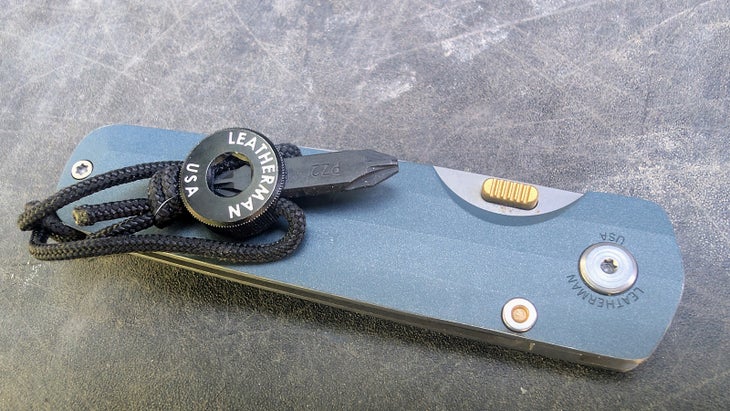
I’ve been carrying nothing but the Leatherman Blazer for the last two weeks and can report that it handles packages, light food tasks, and cleaning dog hair out of my vacuum cleaner as well as anything I’ve carried. The point of these premium folders is to do all that while delivering a satisfying feel. At that, the folding Leathermans deliver like knives that cost twice the price.
Compared to the always-there practicality, style, and hand-feel of a folding pocket knife, a fixed-blade is a much simpler tool. You carry one outdoors because they’re harder to break, easier to clean, and their larger blades are capable of helping with bigger tasks.
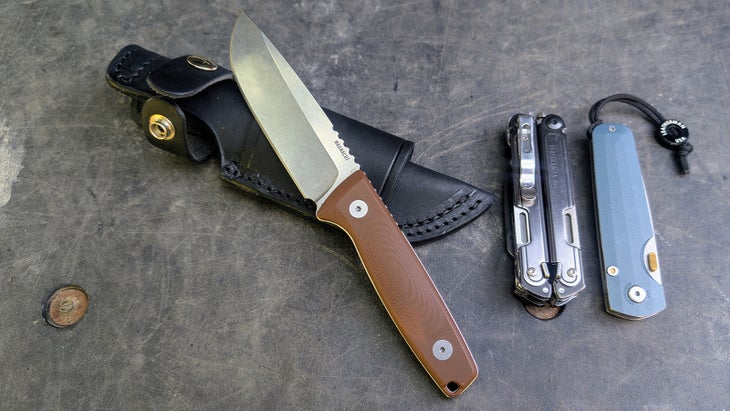
Fixed Blades
Imagine a knife blade as a wedge. A flat-ground blade has straight sides, where a hollow grind results in convex sides. The former is stronger and splits materials apart more efficiently. The latter creates a finer edge that’s weaker, but capable of finer, more controlled slicing. You choose a flat-ground blade when you have wood to split, and a convex one to process animals and plants.
But grinds are hard to see, and blade tips are very visible. To endow its burliest knife with tough looks, Leatherman gave its hard-use blade—the $300 Pioneer—a tanto-style point. But these again have a priority—puncturing—which isn’t a terribly common task outdoors. So, in giving the Pioneer that tough look paired with the flat grind, Leatherman has optimized the Pioneer for bigger tasks. But its five-inch blade isn’t enough to split really big logs.
I’ve been testing a Trac ($300). Which uses the versatile drop point the Pioneer is missing. More practical? Yes, if you’re foraging for mushrooms or skinning a deer. At 0.18-inches thick and 4.2 inches long, the convex blade is too thick at for really fine work and too long to reach inside a cavity and feel for the windpipe—without severing anything containing urine or poop.
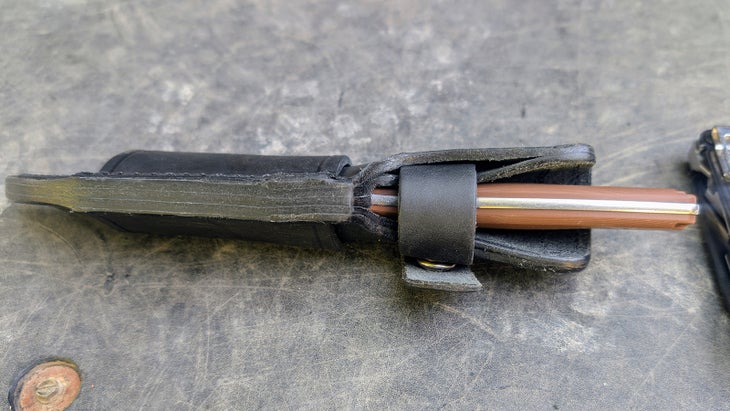
There’s also the $300 Rustle. With its santoku-style blade, it’s focused on meal prep-tasks, and stands out as the only fixed-blade Leatherman that comes with a full-kydex sheath. My only wish is that it featured a belt loop or carry clip. For one of those, you have to turn to the hybrid leather-kydex item that comes with the Pioneer, but which can only be carried vertically, hanging from a belt, or the all-leather sheath on Trac that’s too chunky to be carried at all.
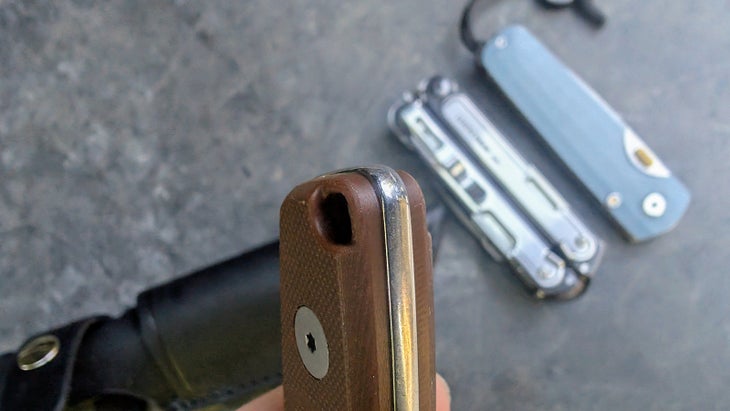
But still, all three are big slabs of sharpened Magnacut, and remain appealing options as a result. To the full tang of steel Leatherman bolts slabs of G10 (a slick, but grippy polymer) to serve as handles. Parts of that blade that aren’t sharp are nicely radiused and feature really deep jimping on the backside to give your fingers something to hang onto.
Leatherman assembles and sharpens all of the knives by hand in its new Portland facility. The fun color combinations, tangible quality, and unique design immediately set them apart. Rather than replacing the Arc multitool I typically carry clipped inside my jeans, Leatherman’s new knives have me wishing for more pockets.
The post Leatherman Just Dropped Its First Premium Knives appeared first on Outside Online.











